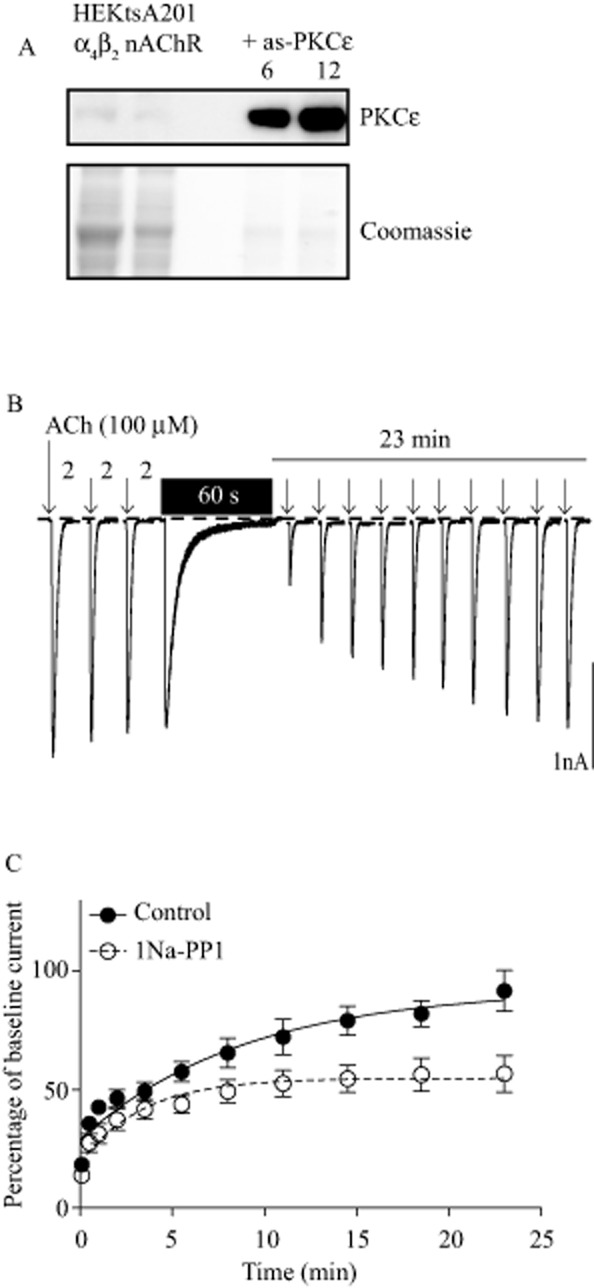Figure 1.

PKCε regulates α4β2 nAChR recovery from deep desensitization. (A) Upper panel, HEKtsA201 cells stably expressing human α4β2 nAChRs have very low levels of endogenous PKCε detected by immunoblotting (left two lanes). Stable transfection with 6 or 12 μg of as-PKCε cDNA resulted in much higher levels of PKCε immunoreactivity (right two lanes). Lower panel, Coomassie blue stain of a simultaneously run identical blot. Samples from as-PKCε-transfected cells were loaded at 20% of the amount of the protein used for native HEKtsA201-α4β2 samples. (B) The response of wild-type α4β2 nAChRs to 300 ms puffs of ACh (100 μM), denoted by the arrows. Baseline stability of the response was determined using three puffs of ACh spaced 2 min apart. A 60 s application of ACh (100 μM) was used to induce deep desensitization and was washed out immediately afterwards. Recovery from deep desensitization was assessed using repeated ACh puffs over 23 min. Time is not to scale. (C) Inhibition of as-PKCε by 1 μM of 1Na-PP1 impaired α4β2 nACh receptor recovery from deep desensitization (control n = 8, 1Na-PP1 n = 9 cells).
